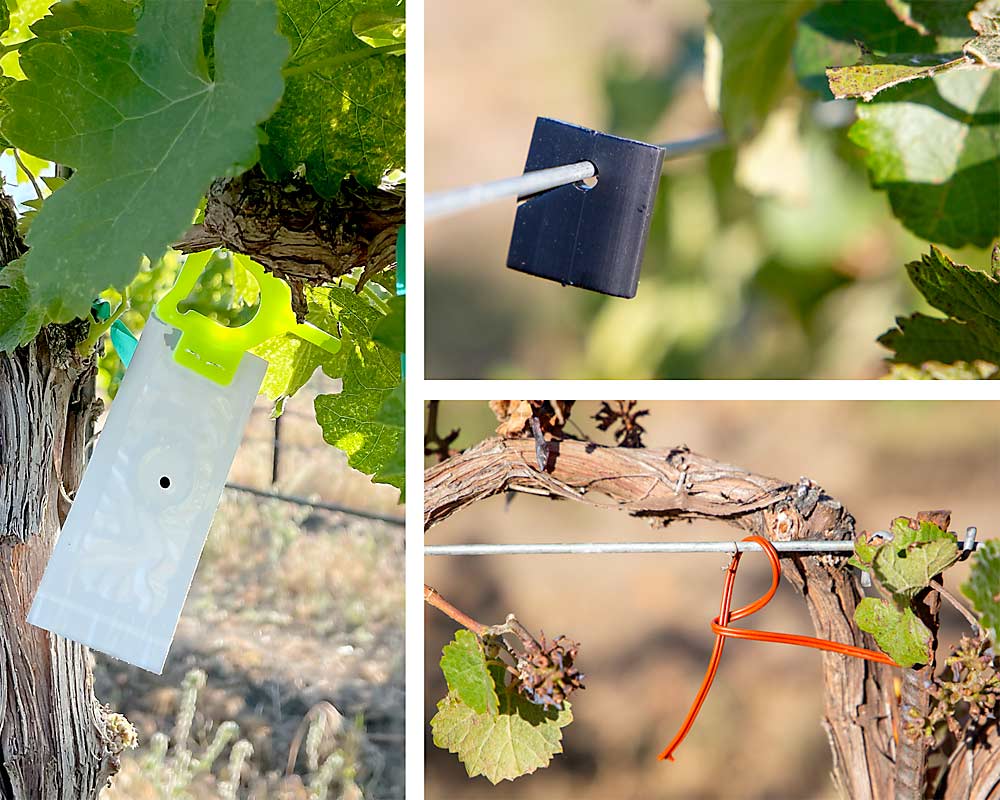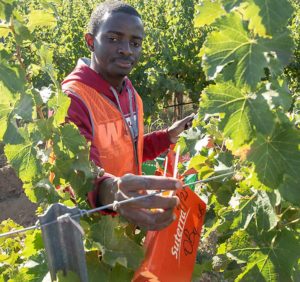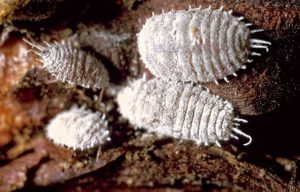
Three companies are developing grape mealybug pheromone emitters to give Washington viticulturists a mating disruption tool against the pest that transmits leafroll disease.
All three are in varying stages of commercializing tools that hang on vineyard wires and emit a pheromone to throw off reproductive flights of grape mealybug.
There is no cure for grapevine leafroll, a viral disease spreading in Washington. Growers must rogue infected vines or remove entire vineyards to prevent the spread, while the grape mealybug shows signs of resistance to conventional insecticides.
Three long-standing pheromone companies in this race are Suterra, based in Bend, Oregon; Pacific Biocontrol of Vancouver, Washington; and Trécé of Adair, Oklahoma. The companies hope to capitalize on a history of mating disruption experience in the tree fruit and wine grape industries.
Codling moth mating disruption has been a mainstay for pome fruit growers since the 1990s, while California viticulturists have more recently used pheromone emitters to control vine mealybug, an even more nefarious cousin of grape mealybug.
As far as entomologists know, the grape mealybug is the primary vector of grapevine leafroll virus in Washington, Oregon and Idaho.
Though the grape mealybug pheromone has been tricky to synthesize, all three companies say they have found a stable recipe. Suterra has applied for registration with the U.S. Environmental Protection Agency, a critical commercialization step, while Trécé and Pacific Biocontrol plan to do the same within two years.
None of the producers shared a target release date or potential prices.
Suterra opted to run trials directly with growers. Emily Symmes, senior manager of technical field services, considers her company beyond the experimental stage. Company representatives are now demonstrating best practices with individual growers, such as emitter spacing and timing of deployment.
Among those growers are Scott Williams, owner of Kiona Vineyards, and a few of his neighbors on Red Mountain near Benton City. Williams hung Suterra’s dispensers in 2023 and has already noticed a difference. His areas with pheromones had “orders of magnitude” lower rates of pest catches in sticky sentinel traps, an indicator that the emitters are indeed throwing off the mating flights of males. He has enough of Suterra’s product to repeat the experiment in 2024, and maybe compound the benefits.
Williams expects the products to be expensive, but not as expensive as replacing vineyards.
“The ultimate goal is to have your vineyard last 100 years instead of 20,” he said.
Peter McGhee, president of Pacific Biocontrol, said his company aims to apply for registration soon but does not know how long the EPA’s process will take.
Brad Higbee of Trécé said the company expects a registration “within a couple of years” and is “well downstream” in the product development process.
Pacific Biocontrol and Trécé chose to team up with Doug Walsh, a Washington State University entomologist, for trials in the Horse Heaven Hills region south of Prosser (see “Mealybug focus for Washington vineyards”).
Walsh also is convinced: “Our research has proved it is effective at achieving mating disruption.”
That’s good, he said, because insecticides are not cutting it anymore. The primary insecticide registered for grape mealybug control is imidacloprid, a neonicotinoid — a class of insecticides that attack the nervous system. Wine producers are under customer pressure not to use them for the perceived risk to nontarget insects, namely honey bees.
Walsh also is studying best practices, such as the optimal number of emitters per acre and timing.
He wonders if there’s a better delivery system, such as a solution that can be mixed into a spray tank. Emitters are labor-intensive to hang each spring and, although Trécé’s and Pacific Biocontrol’s dispensers have proven to last all season, Walsh’s trials suggest growers may not need constant pheromone presence. A timed spray targeting the first-generation mating flight each spring might do enough to shut down the population.
Either way, he is glad the companies are acting.
“We’re excited about these products being brought forward to market,” he said.
—by Ross Courtney









Leave A Comment